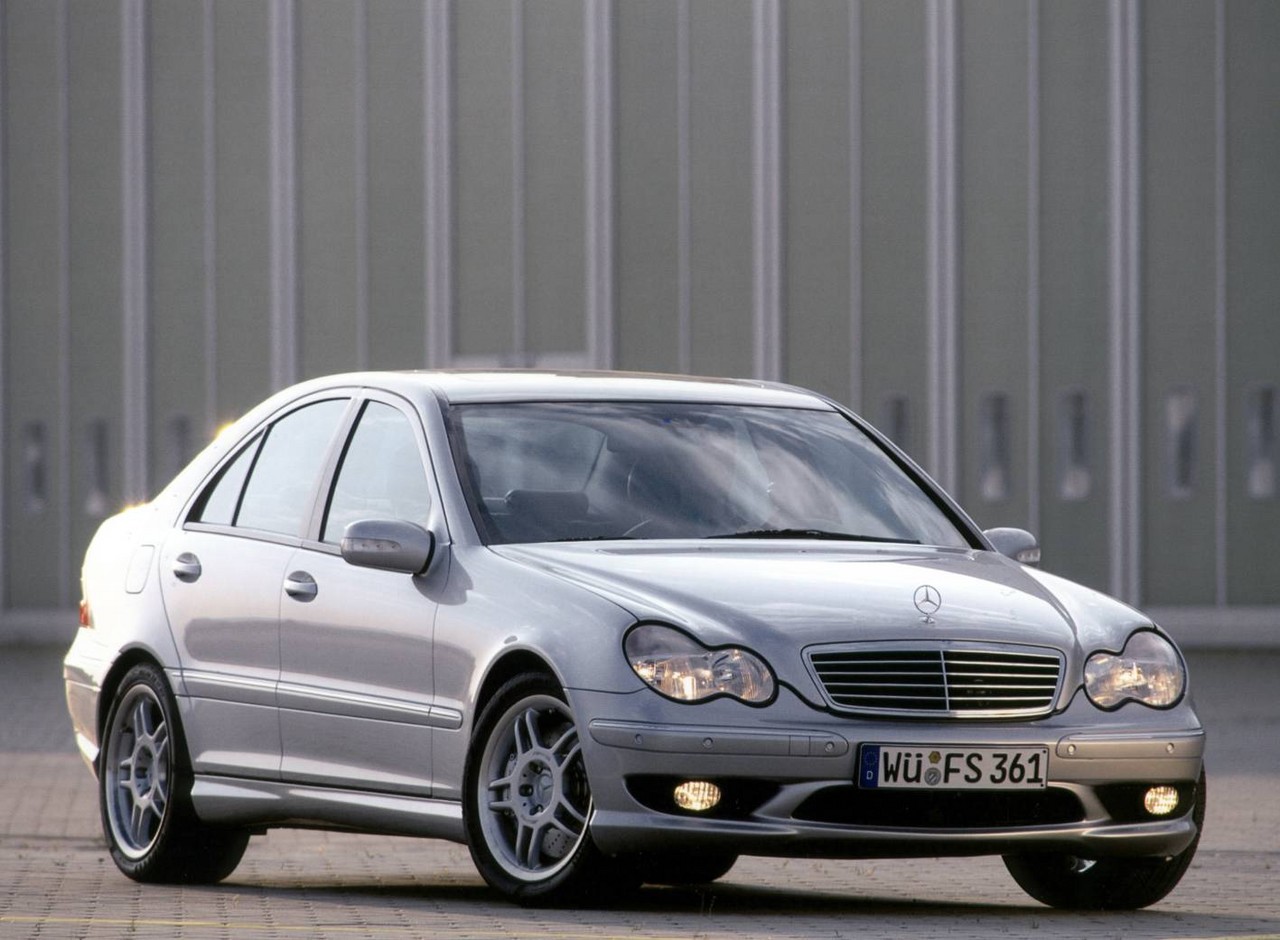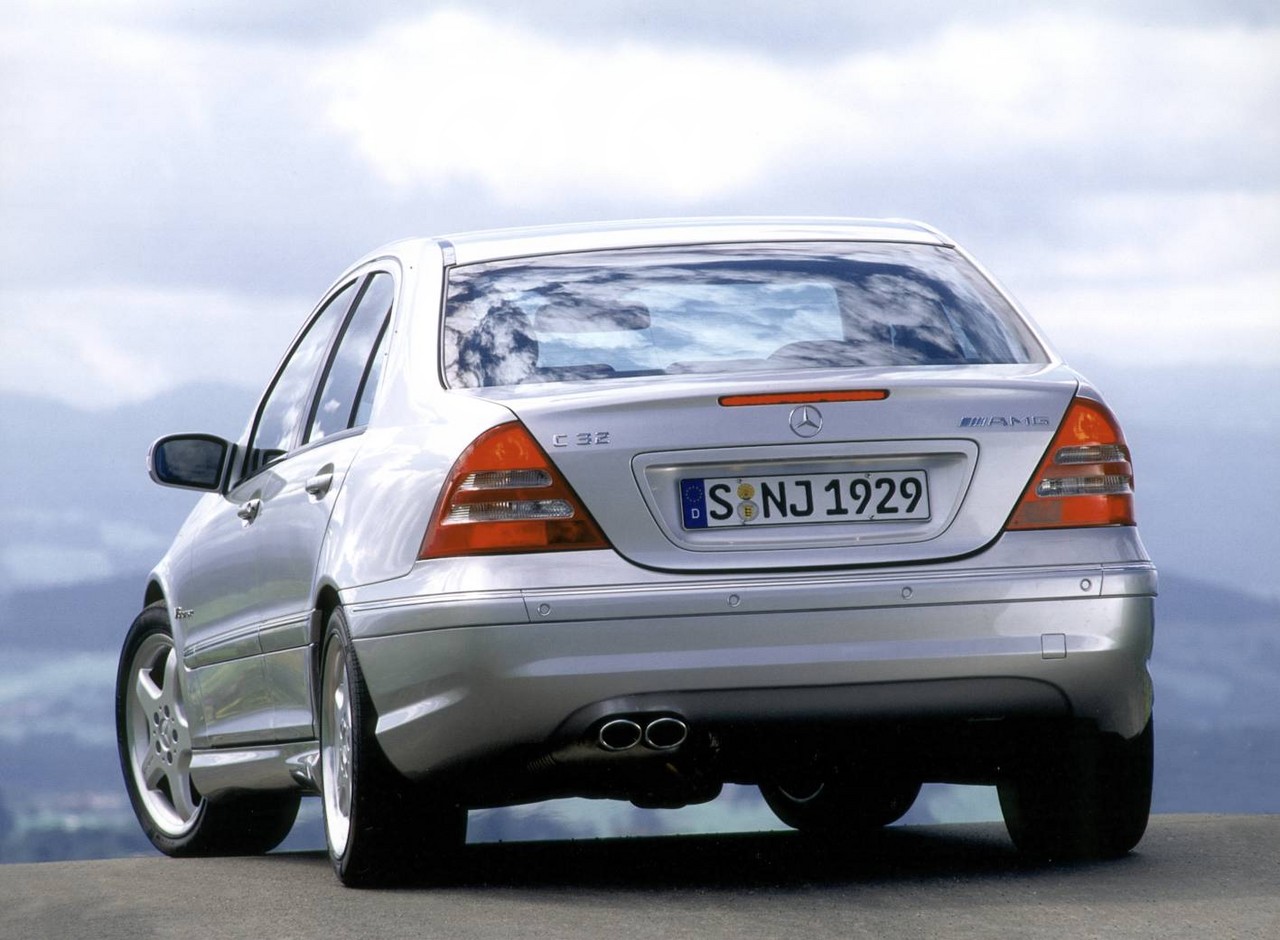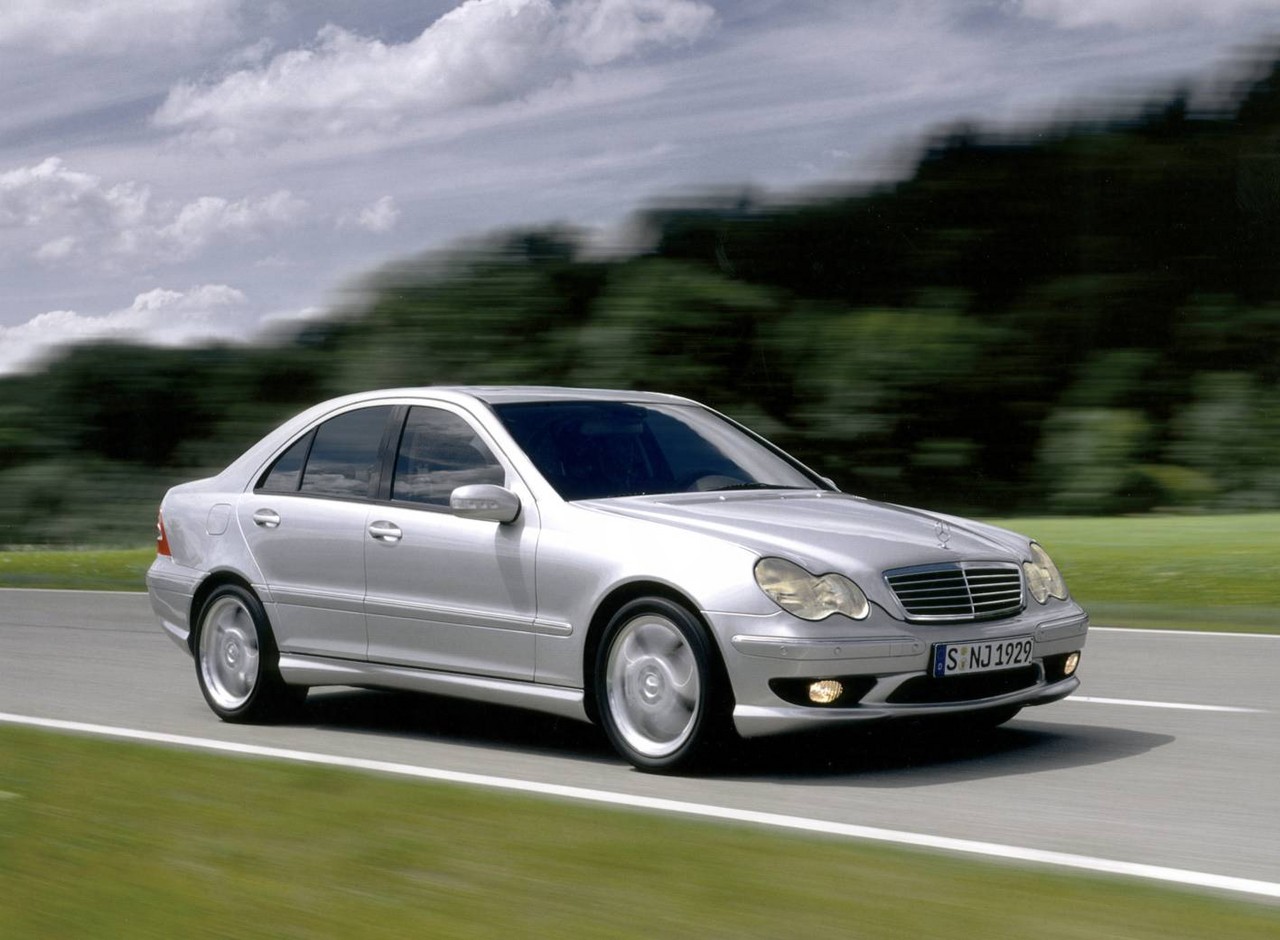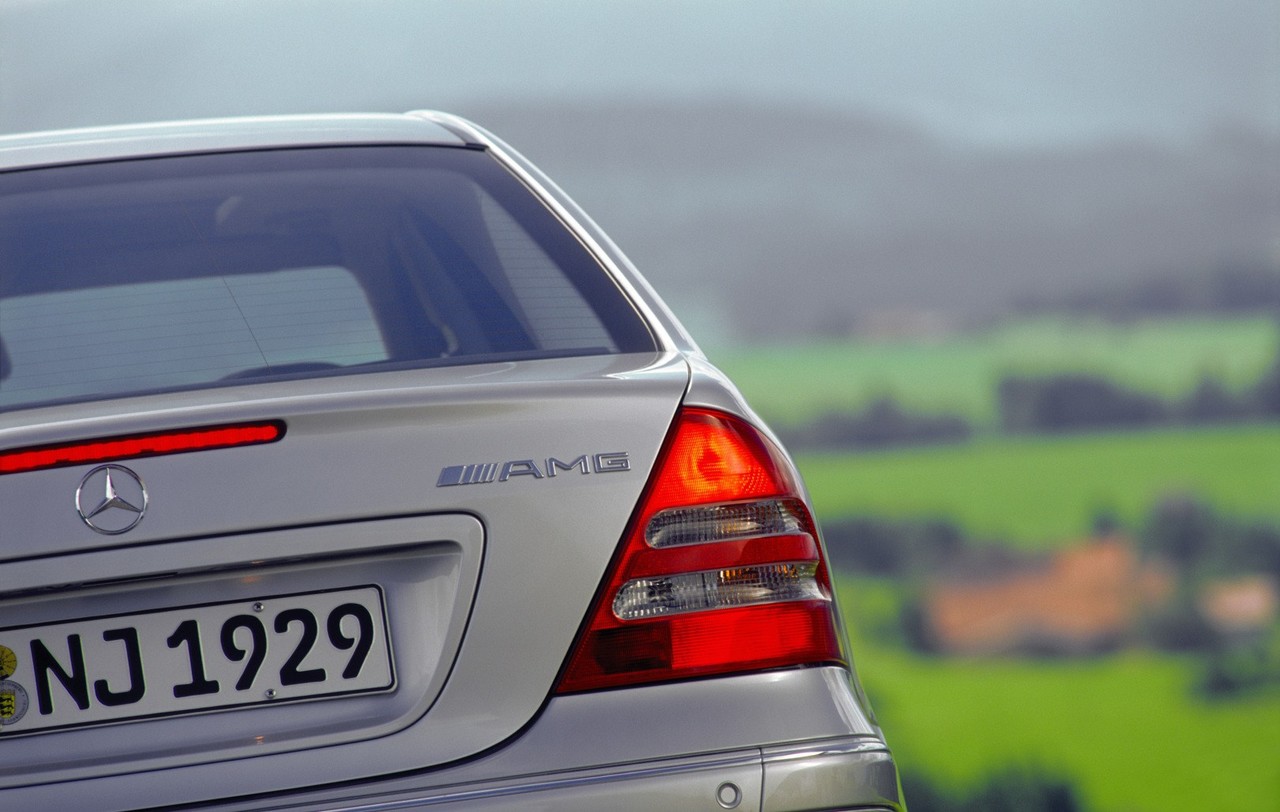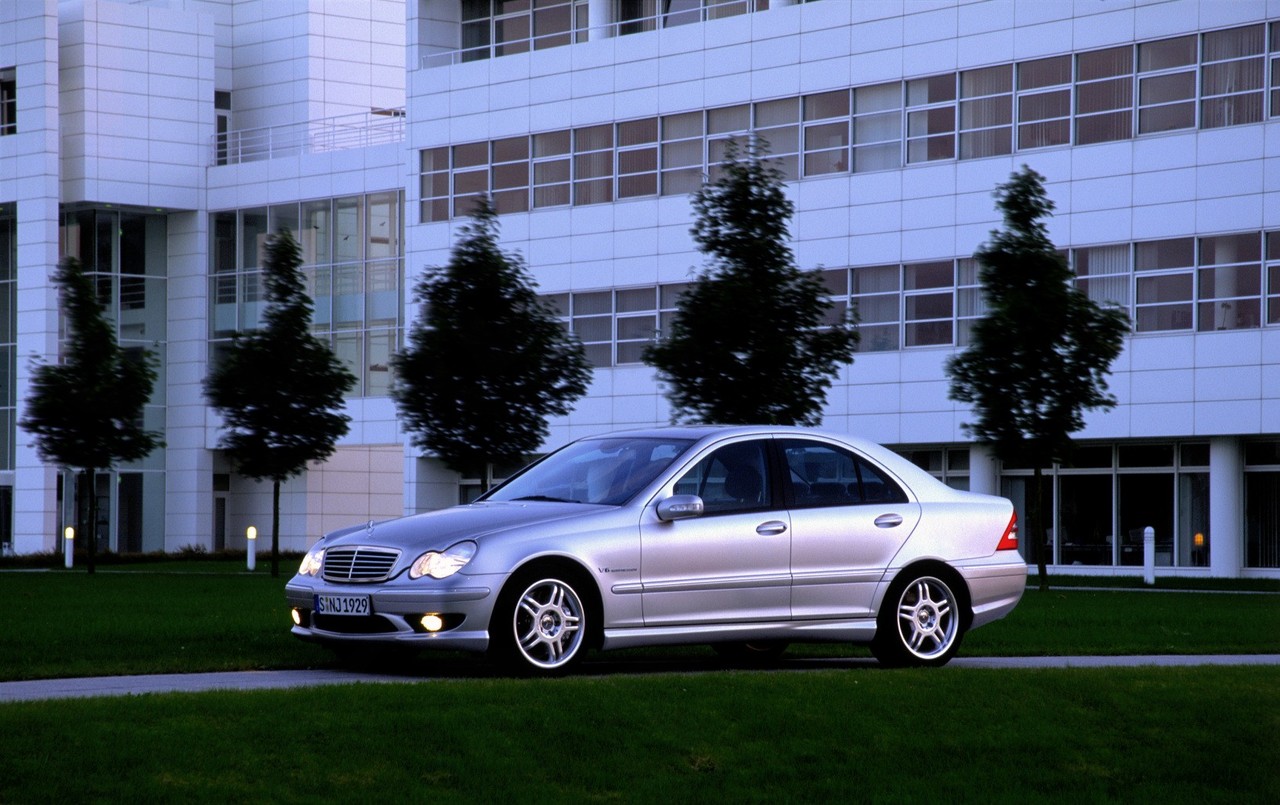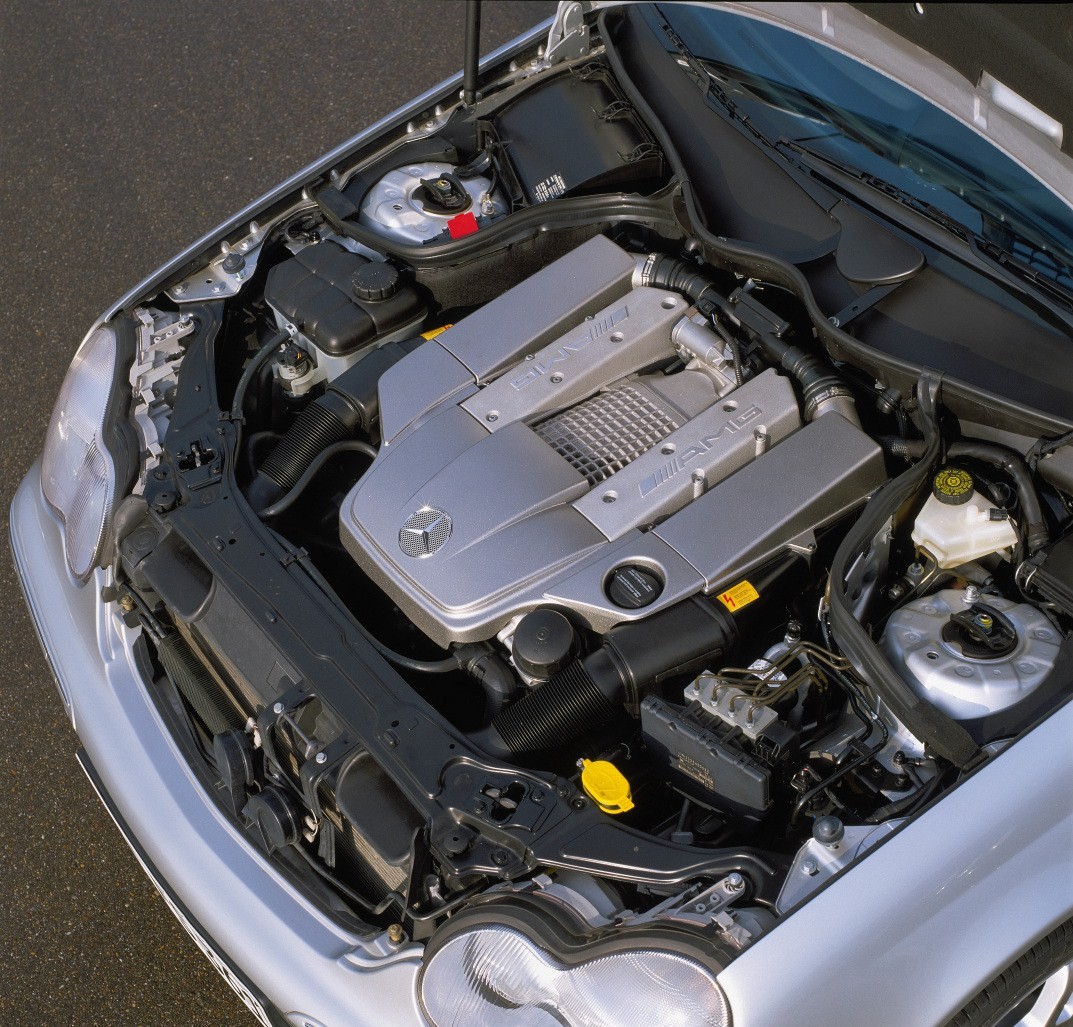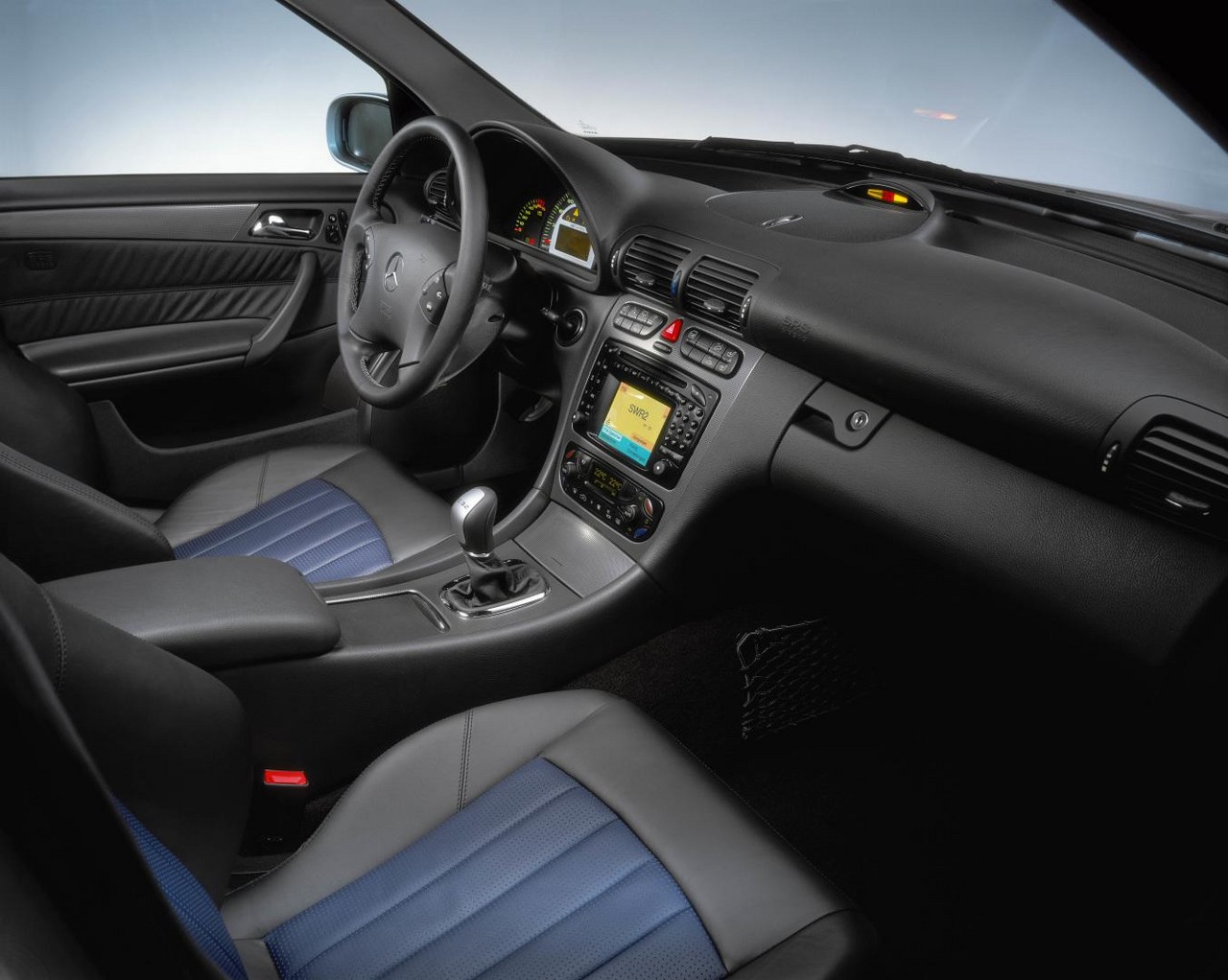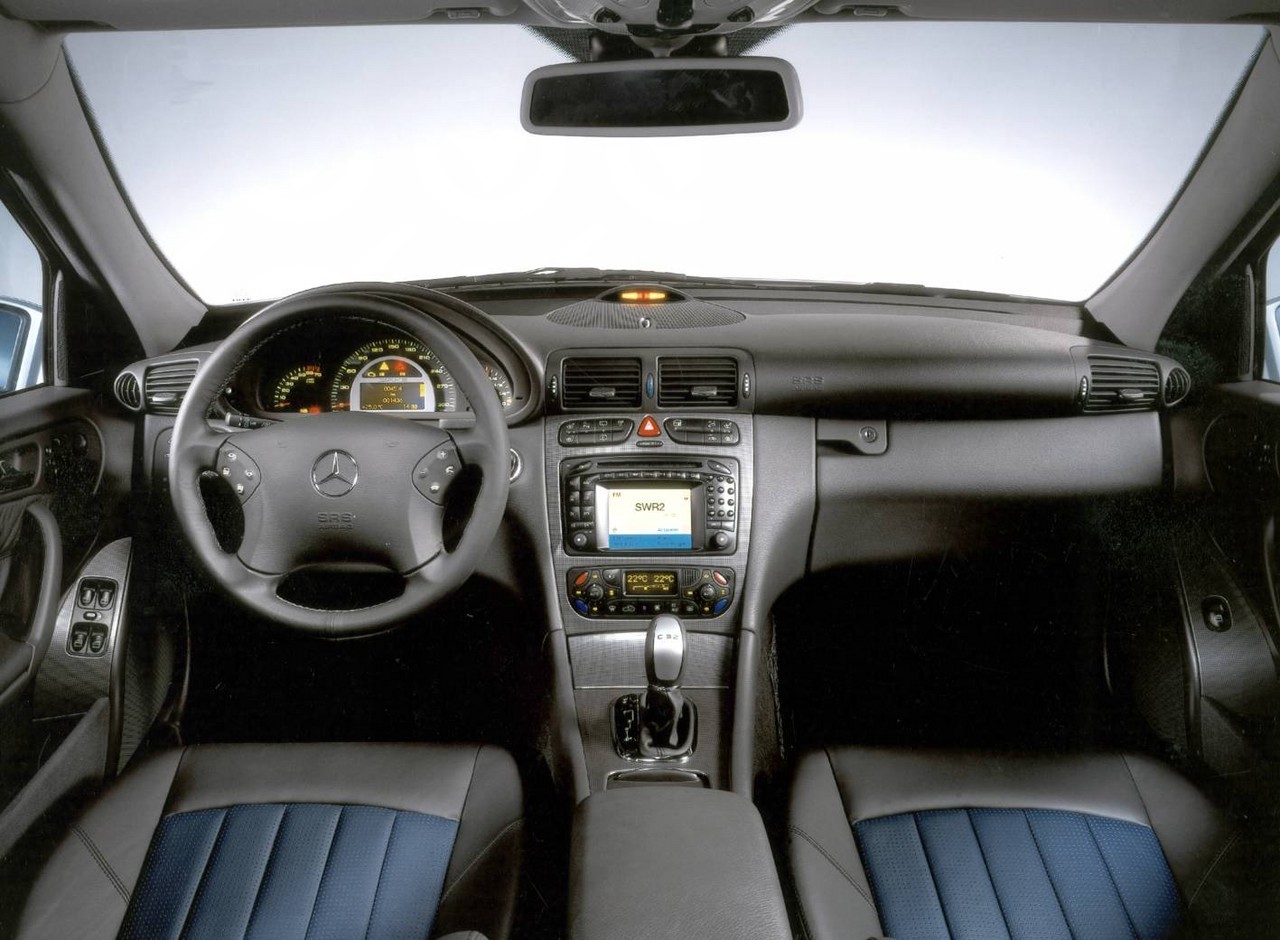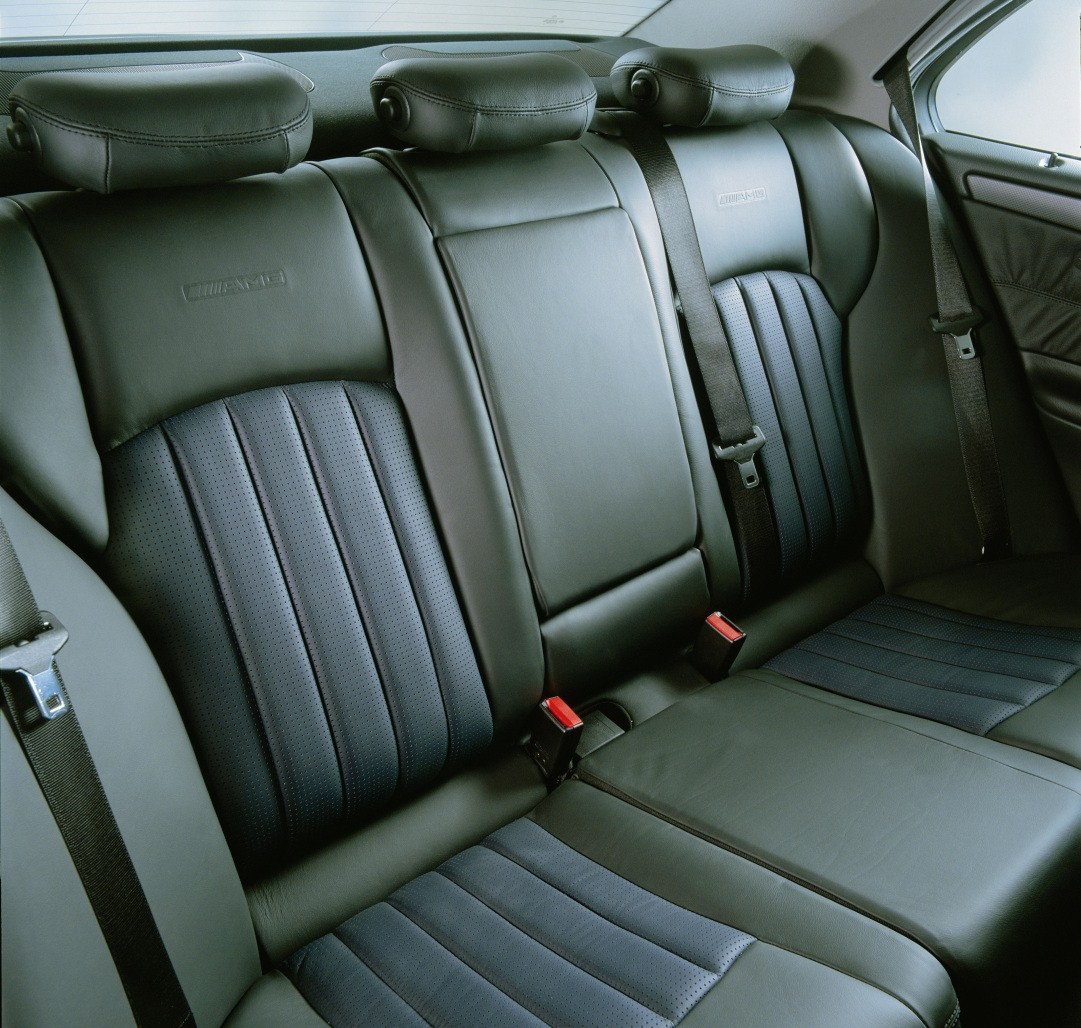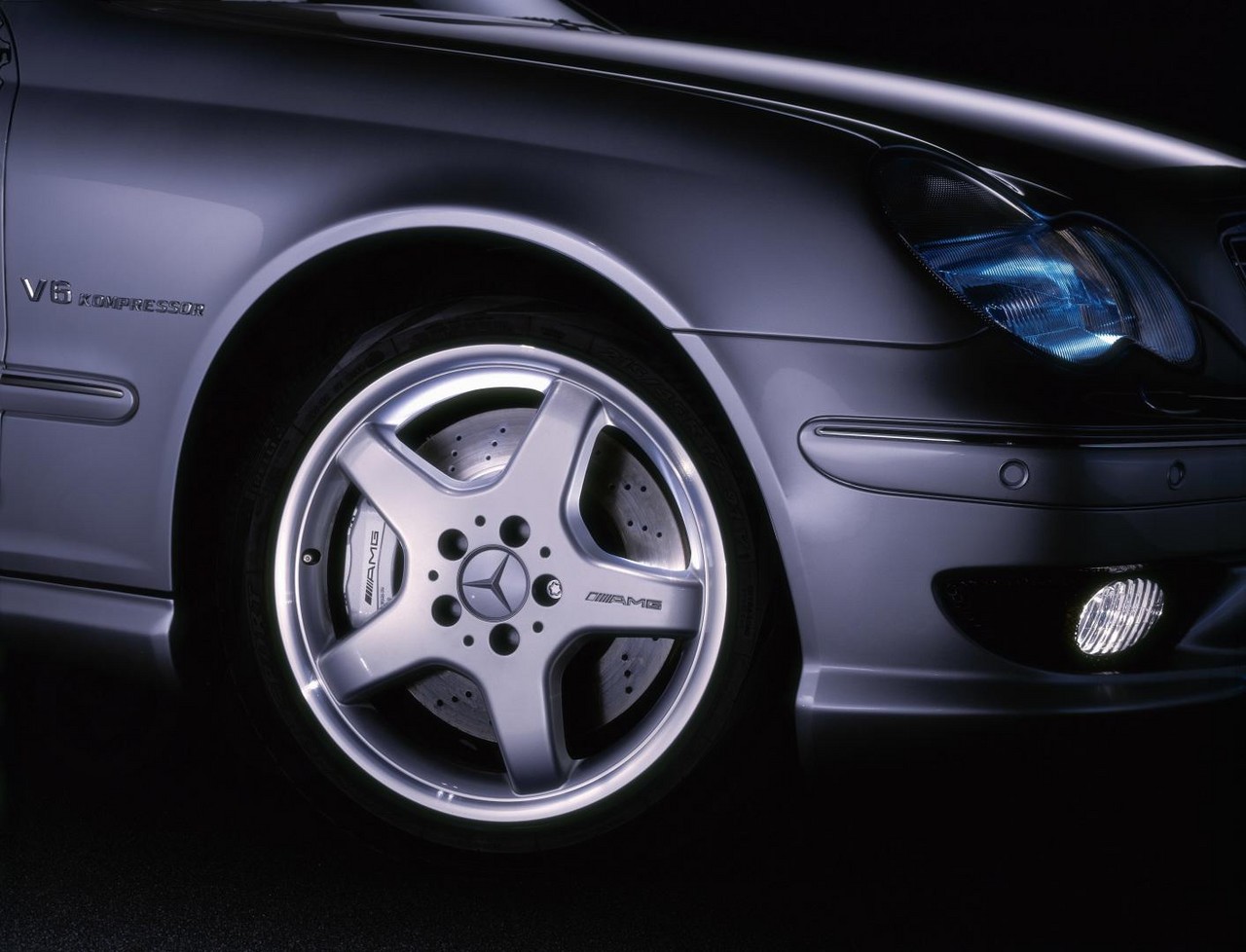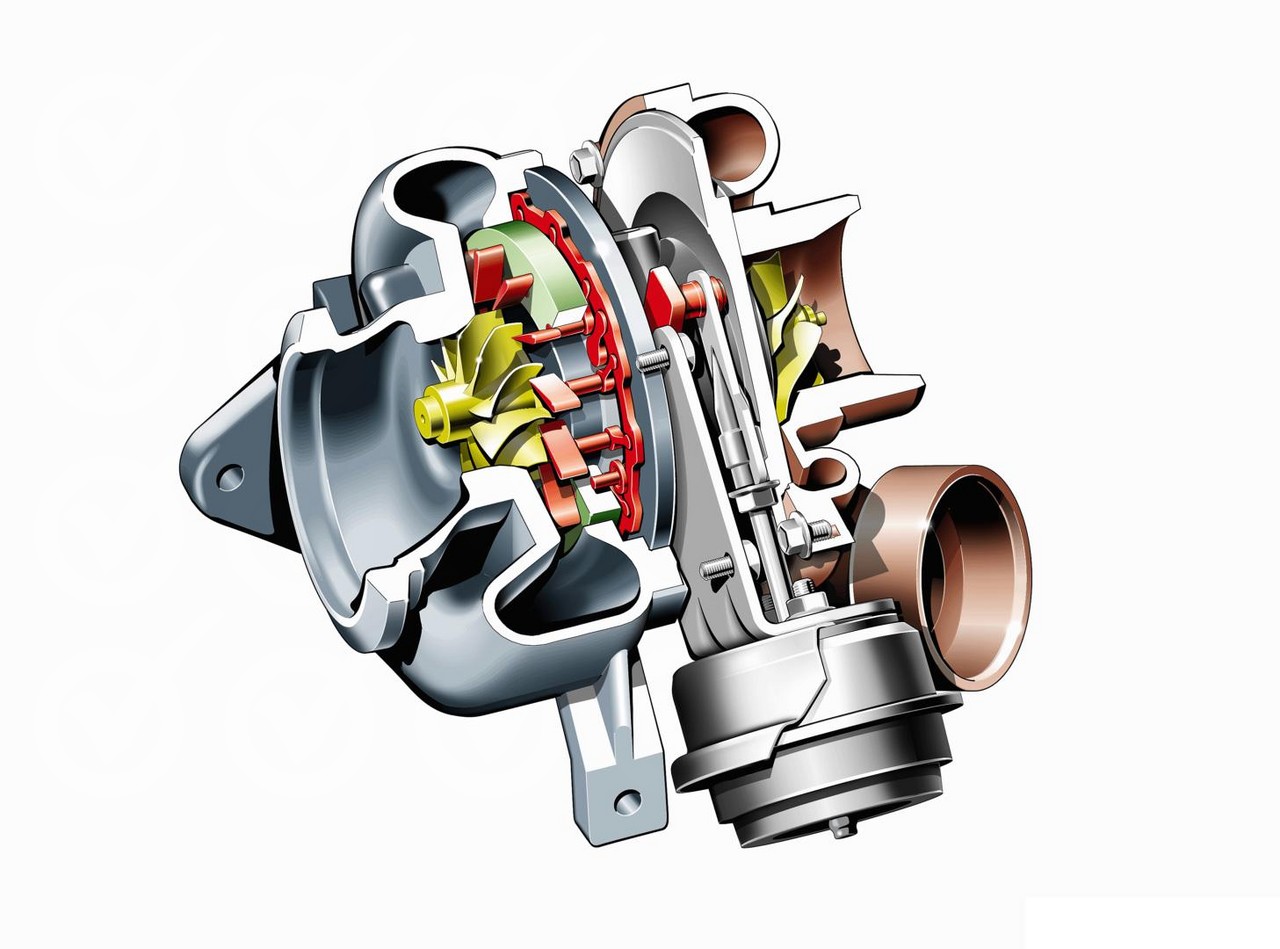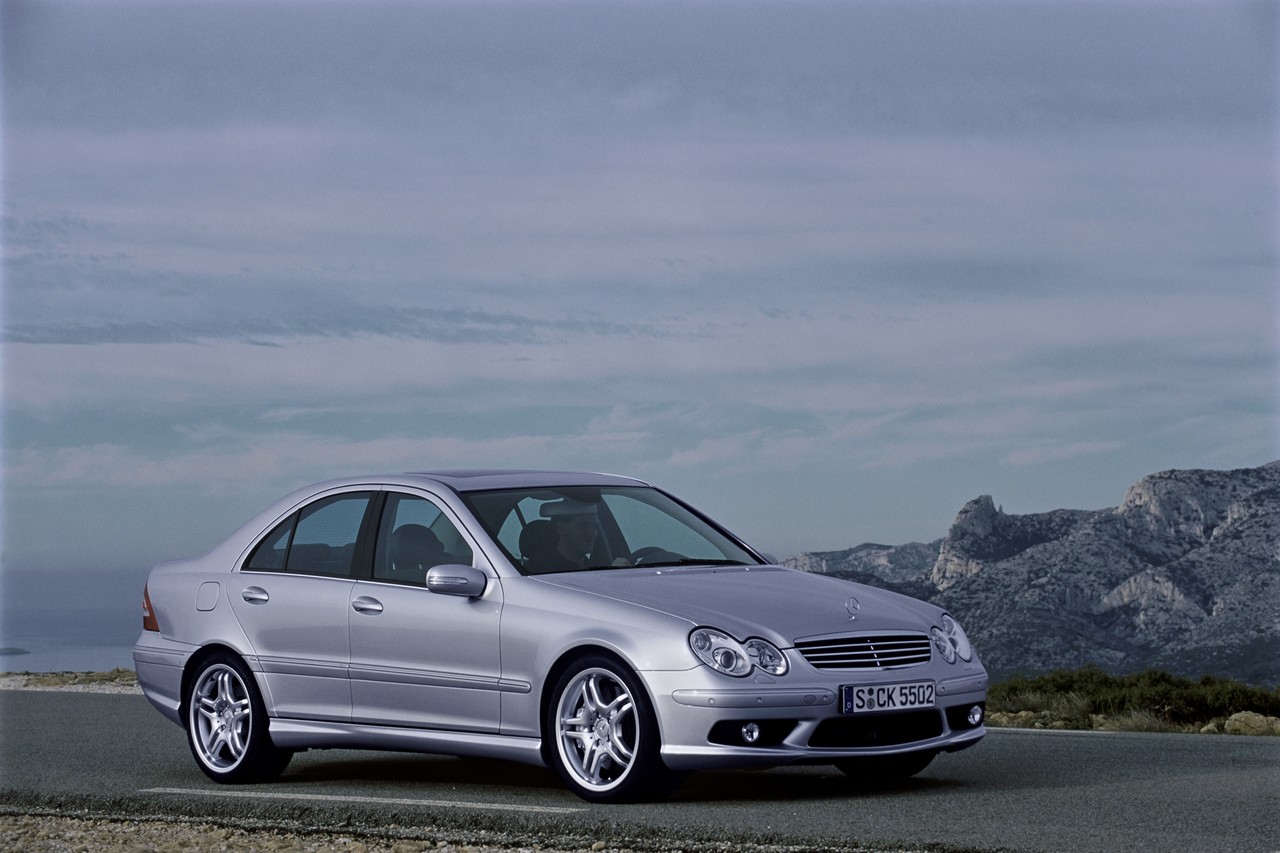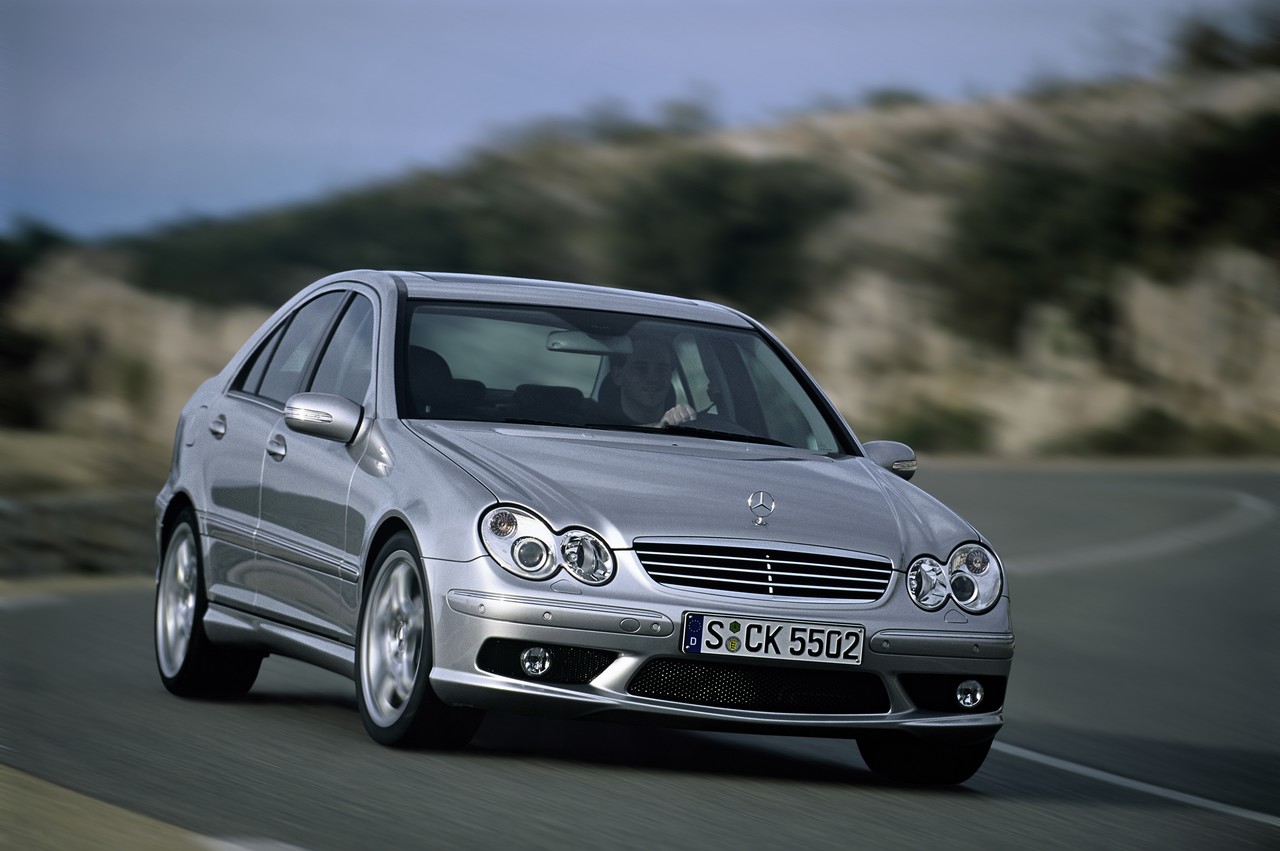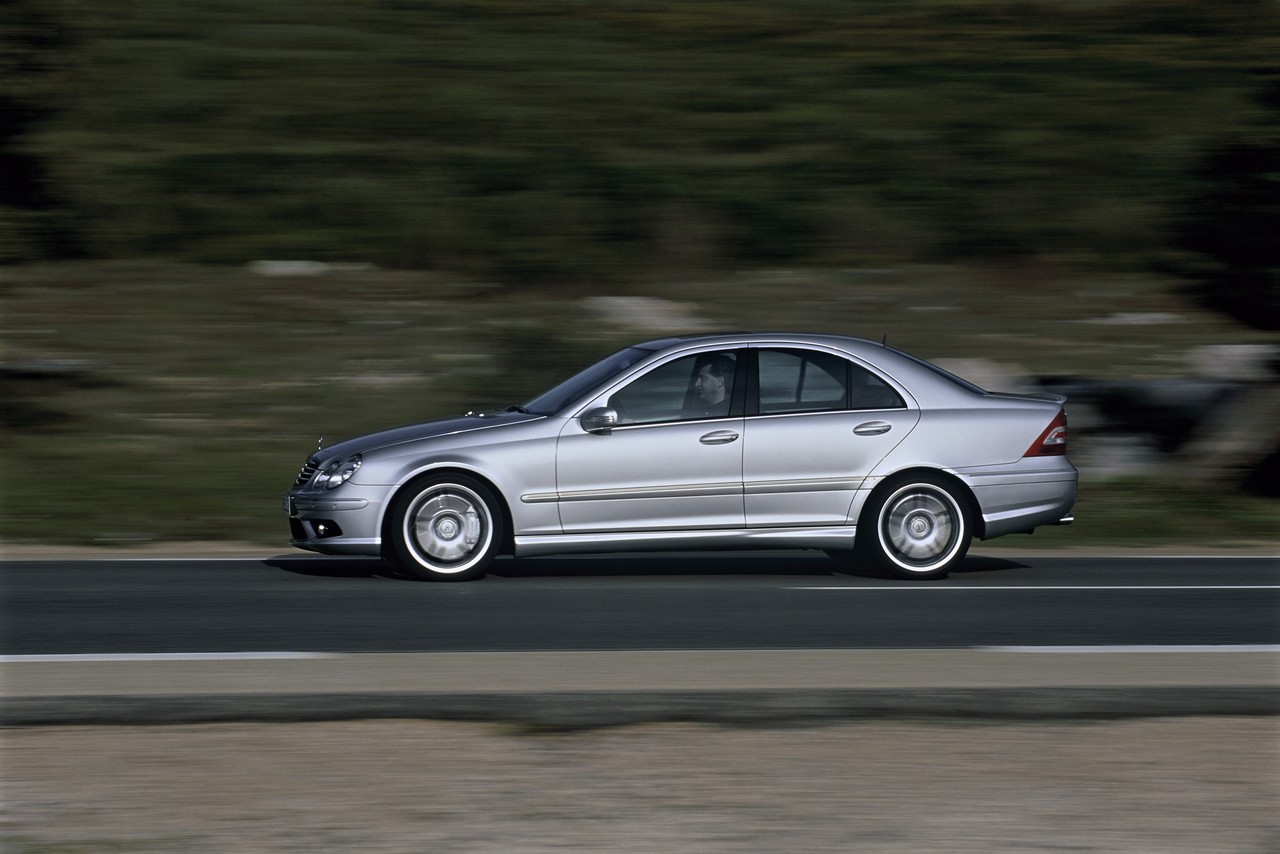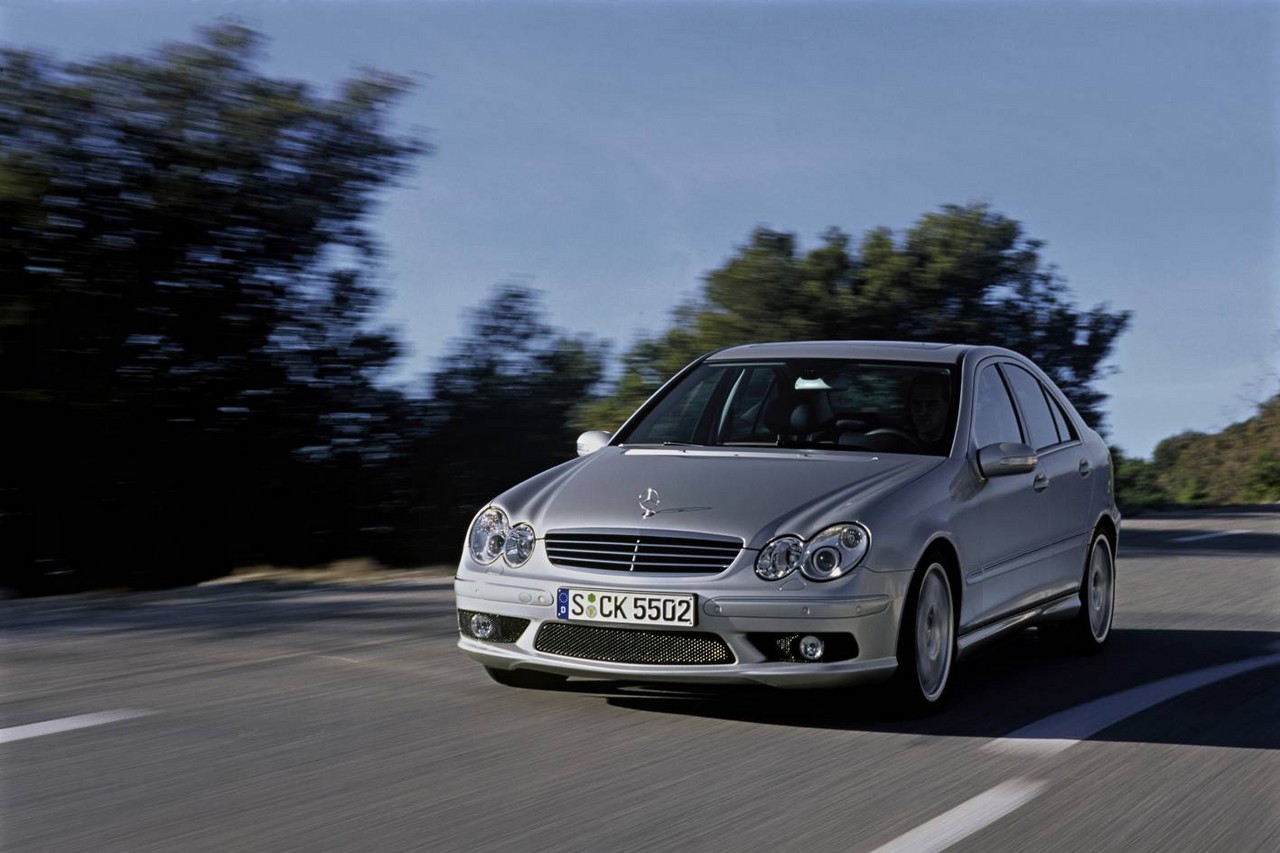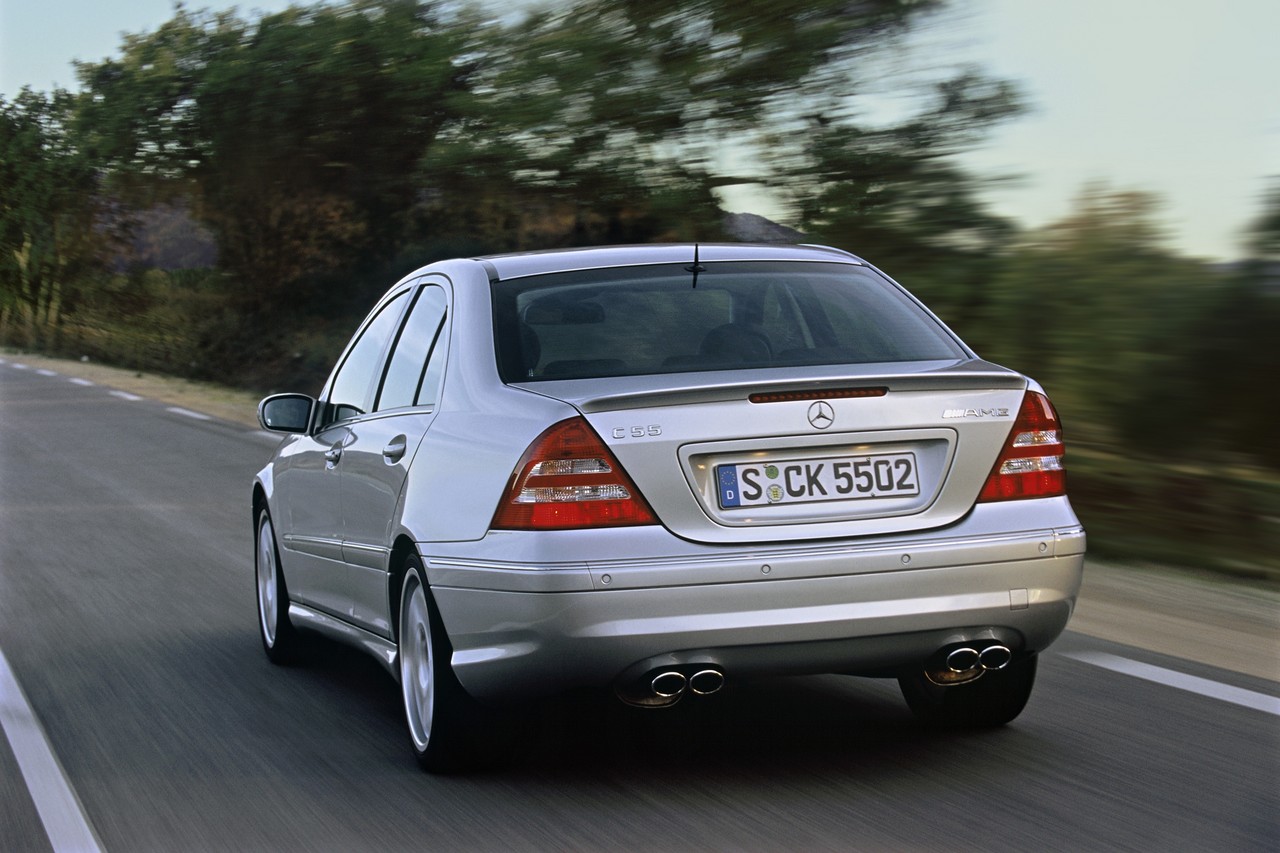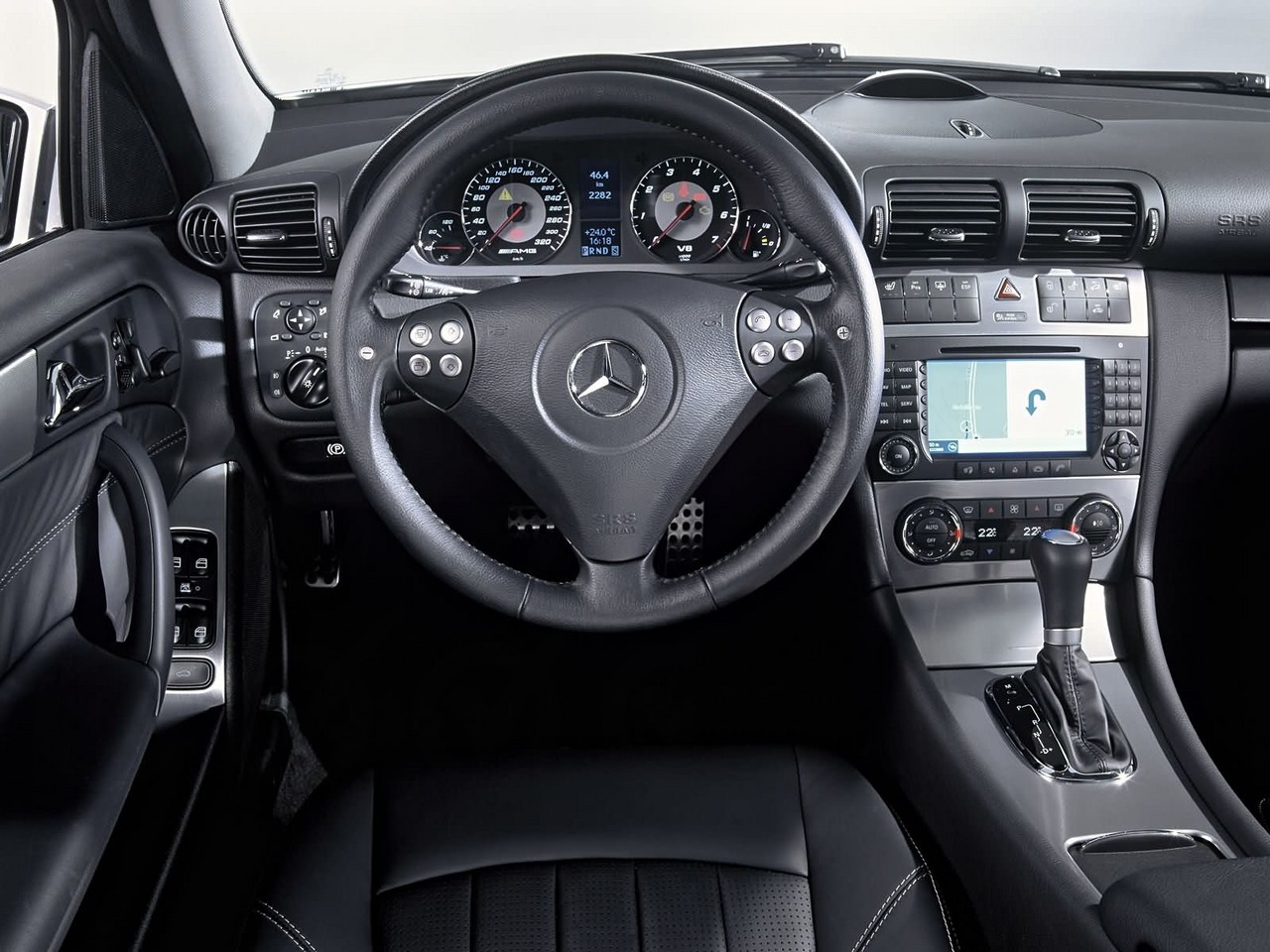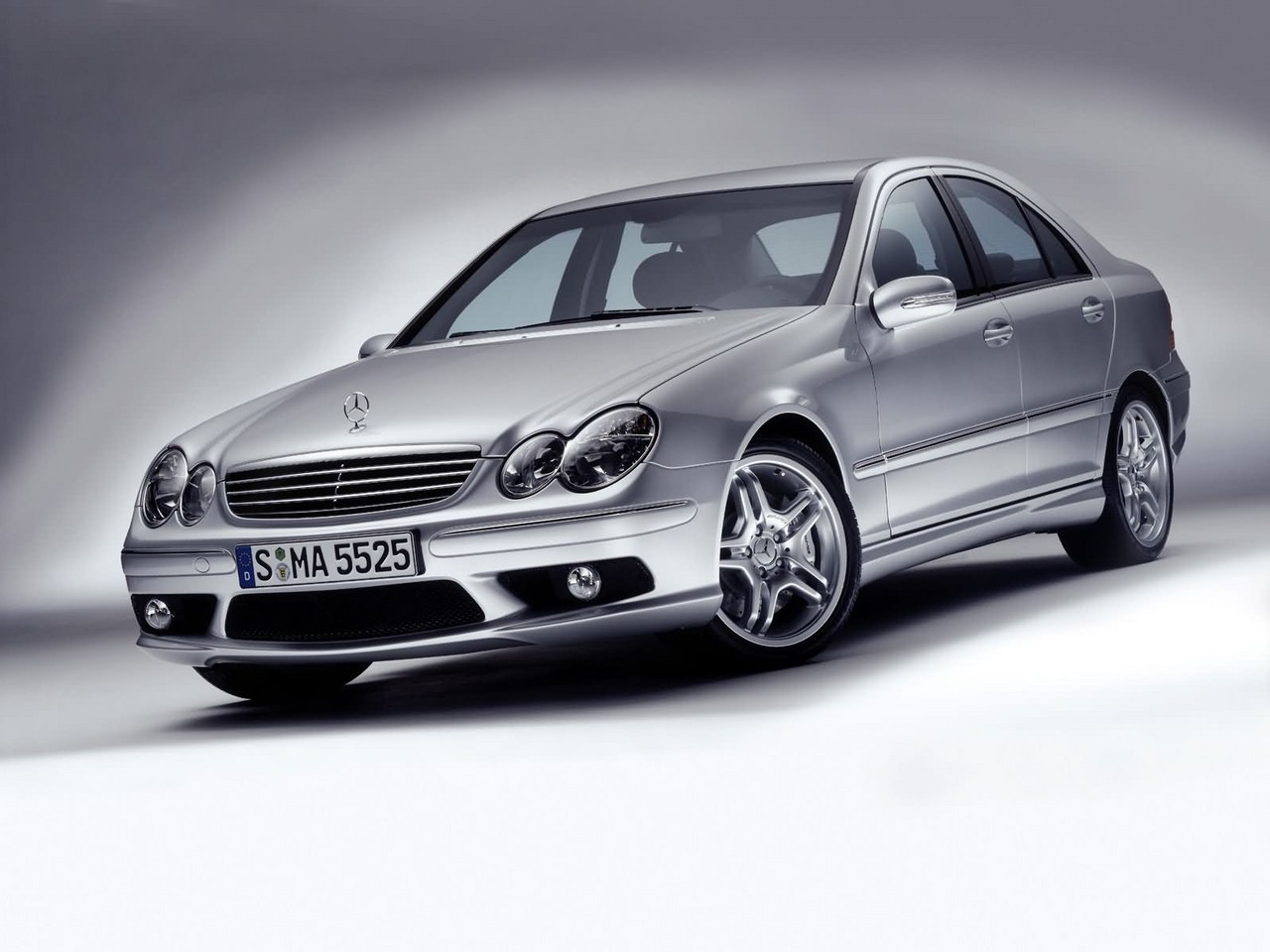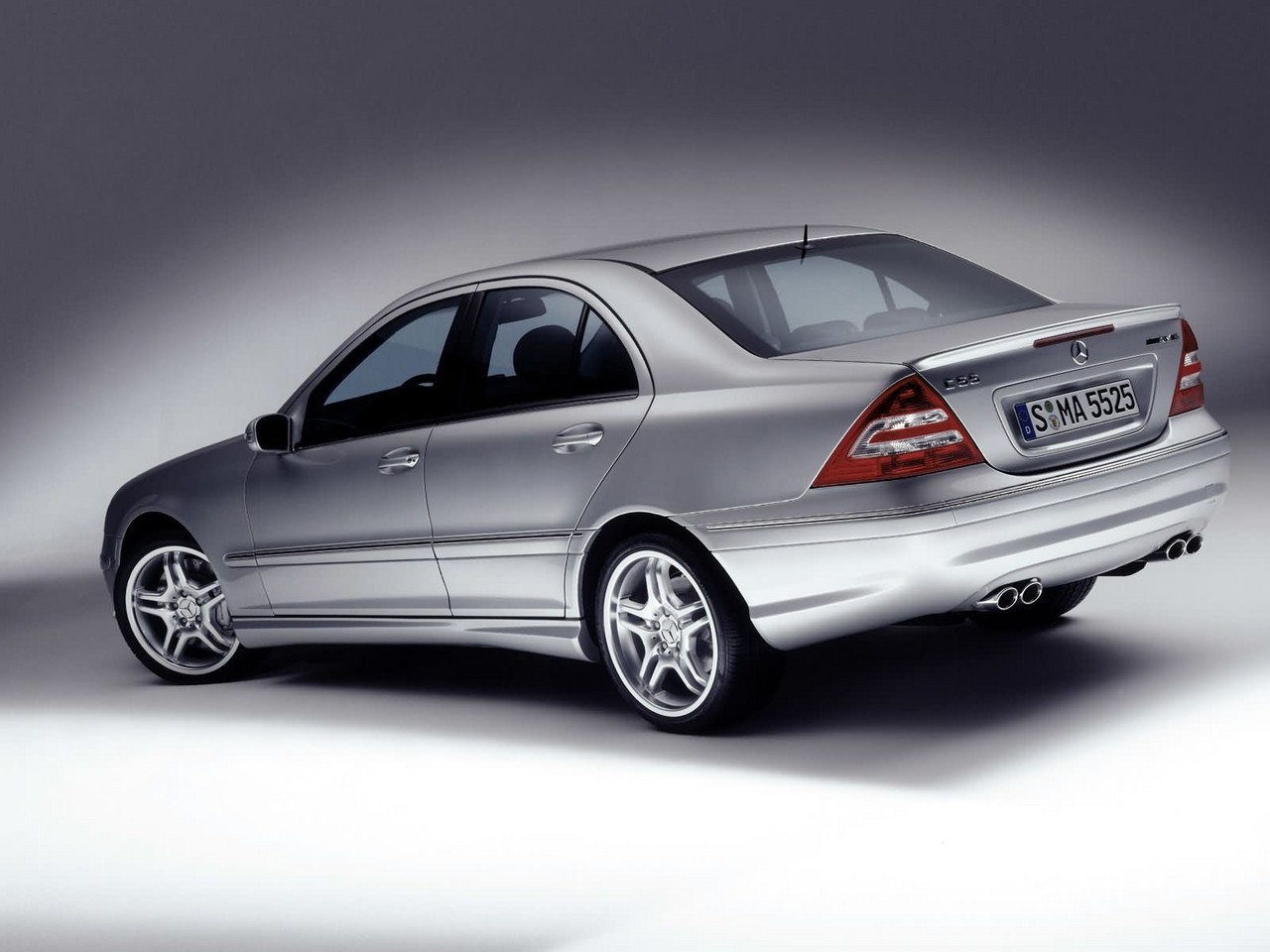
- C 32 AMG has clattering idle noise and lacks feedback as the driver approaches its limits
- C 55 AMG has a harsh ride, heavy steering at higher speeds and too much weight over the front axle for good balance
Review: Mercedes W203 C 32 AMG (2001-04)
Overview
Released in Australia in November 2001, the Mercedes-Benz W203.I C 32 AMG was a compact executive sedan. Manufactured in Germany, the rear-wheel drive W203.I C 32 AMG was powered by a 3.2-litre supercharged V6 petrol engine that was mated to a five-speed automatic transmission.
M112.961 engine
Assembled by hand at the Mercedes-AMG plant in Affalterbach, Germany, the 3199 cc M112.961 V6 petrol engine had an alloy cylinder block with 89.9 mm bores and an 84.0 mm stroke, cast-in Silitec (Al-Si alloy) cylinder liners, forged steel connecting rods, iron-coated aluminium pistons, an alloy cylinder head, a single overhead camshaft (SOHC) per cylinder back driven by a double-roller chain, three valves per cylinder (two intake, one exhaust) actuated by roller rockers, a compression ratio of 9.0:1, two spark plugs per cylinder and Bosch ME 2.8.1 engine management.
The M112.961 engine was fitted with a twin-screw, belt-driven IHI supercharger. To minimise fuel consumption, the supercharger was activated by an electromagnetic coupling according to load and engine speed conditions. The supercharger featured Teflon-coated rotors – which could achieve 20,700 rpm at maximum engine speed – and provided peak boost pressure of 1.22 bar (17.7 psi). The water/charge-air cooler was mounted between the cylinder banks and connected to a separate radiator that was located at the front of the vehicle in the fresh air stream. While peak torque was 450 Nm at 4400 rpm, over 400 Nm was available from 2300 rpm.
Compared to the standard M112 engine, changes for the supercharged M112.961 engine included:
- A new crankshaft with bearings adapted to the high torque;
- New connecting rods;
- A temperature-resistant coating for the pistons to withstand peak pressures in excess of 90 bar;
- A new balancer shaft;
- A higher-volume oil pump for increase oil supply to the oil nozzles (which had a 70 per cent higher output);
- Lightweight, assembled camshafts;
- Harder valve springs to increase the rated engine speed (from 6000 rpm to 6220 rpm) and resulting valve forces;
- An air pressure sensor instead of the usual hot film air mass meter; and,
- A unique exhaust system with four ceramic catalytic converters.
Over the combined NEDC cycle, fuel consumption for the C 32 AMG was 11.5 litres per 100 km. Furthermore, the C 32 AMG could accelerate from rest to 100 km/h in 5.2 seconds.
| Engine | Trans. | Peak power | Peak torque | |
|---|---|---|---|---|
| C 32 AMG | 3.2-litre s/charged petrol V6 (M112) | 5sp auto | 260 kW at 6100 rpm | 450 Nm at 4400 rpm |
AMG Speedshift transmission
Compared to the regular five-speed automatic transmission in the W203 C-Class range, the AMG Speedshift transmission:
- Had a one-touch sequential shift function;
- Provided gearshifts that were up to 35 per cent faster;
- Had a torque converter lock-up function above first gear to reduce torque converter slip and increase fuel efficiency;
- Had a downshift braking function if deceleration conditions were satisfied;
- Would stay in the current gear if a certain level of lateral acceleration was present (intended to delay or prevent gearshifts when cornering); and,
- Had an optimum gear function – selected by moving the gearshift lever to the left – which would cause the transmission to select the gear for maximum acceleration (depending on current speed and engine management data).
Gear ratios for the AMG Speedshift transmission were 3.59 (1st), 2.19 (2nd), 1.41 (3rd), 1.00 (4th) and 0.83 (5th), while the final drive ratio was 3.06:1.
Dimensions
Compared to its W202 C 43 AMG predecessor, the W203 C 32 AMG was 41 mm longer (at 4528 mm), 8 mm wider (1728 mm), 28 mm taller (1415 mm) and had a 25 mm longer wheelbase (2715 mm); kerb weight increased by 65 kg to 1635 kg. Visually, the C 32 AMG could be identified by its AMG body-styling and twin exhaust pipes.
Suspension
The Mercedes-Benz W203 C 32 AMG had three-link front suspension with MacPherson struts and multi-link independent rear suspension, both with coil springs, gas-filled shock absorbers and stabiliser bars. Compared to the W203 C 320, changes for the C 32 AMG included:
- Retuned spring-damper units all round;
- Larger stabiliser bars for the front and rear axles; and,
- 30 mm lower suspension.
Steering
The Mercedes-Benz C 32 AMG had rack-and-pinion, power-assisted steering.
Safety equipment
Standard safety equipment for the Mercedes-Benz C 32 AMG included dual front airbags (with two-stage deployment), door-mounted front and rear side airbags, full-length curtain airbags (i.e. for front and rear occupants), ABS, brake assist, electronic stability control, traction control and front and outer rear seatbelts with pre-tensioners and load limiters.
Brakes
The Mercedes-Benz C 32 AMG had 345 mm by 30 mm internally ventilated perforated front disc brakes with four-piston callipers and 300 mm by 22 mm internally ventilated rear discs with two-piston callipers. The C 32 AMG could brake from 100 km/h to rest in less than 36 metres.
Euro NCAP crash testing
In Euro NCAP crash testing , a 2002 Mercedes-Benz W203 C 180 sedan received a five star adult occupant protection rating with a score of 32.69 – this result, however, included two points for seatbelt reminders which were only introduced in Australian models in 2004. In the frontal offset impact test, protection from serious chest injury was marginal for the driver. In the side impact test, a curtain airbag deployed but did not open fully and there was a slight risk of serious abdomen injury for the driver.
Features: Mercedes-Benz C 32 AMG
Standard features for the Mercedes-Benz C 32 AMG included 17-inch twin-spoke light-alloy wheels, 7.5J x 17-inch front wheels with 225/45 ZR17 tyres and 8.5J x 17-inch rear wheels with 245/40 ZR17 tyres, a seven speaker sound system with a CD changer, Mercedes-Benz’s COMAND with navigation, climate control air conditioning (‘Thermatic’), Nappa leather AMG sport seats, power adjustable and heated front seats, cruise control (‘Speedtronic’), front fog lights, automatic headlights (‘Headlamp Assist’), rain-sensing wipers, 1/3 to 2/3 split and folding rear seats, an AMG leather sports steering wheel, remote central locking, power adjustable and heated mirrors, power windows, a height and reach adjustable steering wheel, push-button start, an anti-dazzle rear view mirror, front seat memory settings, a power-operated glass sunroof, tinted windows, a trip computer, ‘Quadra’ aluminium interior trim and an immobiliser.
Review: Mercedes W203 C 55 AMG (2004-07)
Overview
Released in Australia in September 2004, the W203.II C 55 AMG replaced the C 32 AMG and was powered by a 5.4-litre V8 petrol engine that was mated to a five-speed automatic transmission. Visually, the W203.II C 55 AMG could be identified by its clear-lens headlamps, new front bumper with a larger lower air intake and radiator grille with three more obliquely angled transverse slats. Inside, there was a new instrument cluster in a chronometer design, new climate controls and switchgear.
M113.988 V8 engine
The M113.988 V8 petrol engine had an alloy cylinder block with 97.0 mm bores and a 92.0 mm stroke for a capacity of 5439 cc, cast-in Silitec (Al-Si alloy) cylinder liners, fracture-split forged steel connecting rods, iron-coated aluminium pistons, an alloy cylinder head, a single overhead camshaft (SOHC) per cylinder bank driven by a double-roller chain, three valves per cylinder (two intake, one exhaust) actuated by roller rockers, a compression ratio of 10.5:1, two spark plugs per cylinder and a magnesium dual-length intake manifold.
Gear ratios for the AMG Speedshift transmission were unchanged at 3.59 (1st), 2.19 (2nd), 1.41 (3rd), 1.00 (4th) and 0.83 (5th), though the final drive ratio was 3.15:1. As a result, the C 55 AMG could accelerate from rest to 100 km/h in 5.2 seconds. Over the combined EUDC test cycle, fuel consumption for the C 55 AMG was 11.9 litres per 100 km.
| Engine | Trans. | Peak power | Peak torque | |
|---|---|---|---|---|
| C 55 AMG | 5.4-litre petrol V8 (M113) | 5sp auto | 270 kW at 5750 rpm | 510 Nm at 4000 rpm |
Dimensions
Compared to its C 32 AMG predecessor, the front-end structure of the C 55 AMG had to be extended by 80 mm to accommodate the 5.4-litre V8 engine. Relative to the C 32 AMG, the C 55 AMG was 83 mm longer (at 4611 mm), 16 mm wider (1744 mm) and 3 mm lower (1412 mm); wheelbase length (2715 mm) and kerb weight (1635 kg) were unchanged.
Safety equipment
Initially, standard safety equipment for the Mercedes-Benz C 55 AMG was the same as the C 32 AMG. In August 2005, standard safety equipment was extended to include active front seat head restraints (Mercedes-Benz’s ‘Neck-Pro’).
Brakes
The C 55 AMG had 345 mm by 30 mm front brake discs with four-piston callipers and 300 mm by 22 mm rear discs with two-piston callipers.
Features: C 55 AMG
Compared to the C 32 AMG, standard features for the C 55 AMG were extended to include 18-inch alloy wheels with 225/40 R18 front and 245/35 R18 rear tyres, Mercedes-Benz’s COMAND APS system with ‘Audio 20’ sound system, a six-disc CD player and DVD-based satellite navigation with a 6.5-inch TFT display, bi-xenon headlights, front fog lights with cornering function, power folding door mirrors and a power adjustable steering column. Inside, there were AMG sports seats with Alcantara upholstery and silver-coloured dials.
From February 2005, the C 55 AMG was fitted with rear parking sensors.
Related links
